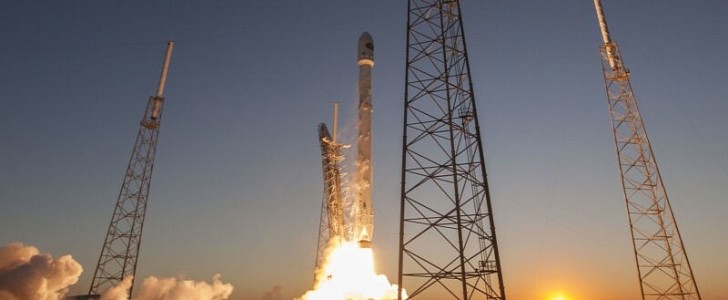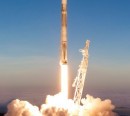Elon Musk has big plans to touchdown on the Moon. One of his rockets will actually do just that, but it’s way ahead of schedule and not actually planned. A SpaceX Falcon 9 rocket has been drifting off the Earth-moon system for years and will slam into the Moon on March 4.
In February 2015, SpaceX’s Falcon 9 rocket launched from Florida, U.S., in a mission to deploy the Deep Space Climate Observatory (DSCOVR), a team effort between the U.S. National Oceanic and Atmospheric Administration and NASA. But it’s been in space for almost seven years, and one part of the rocket followed a “chaotic” orbit.
While Elon Musk does have a contract with NASA for its Artemis lunar exploration program, the plans are for the future, with hopes to achieve in 2025. But Musk loves to be ahead of schedule, and this out-of-control rocket will be the first of his creations to actually reach the Moon. Although unplanned.
Satellite trackers show that a chunk of the Falcon 9 rocket will be slamming into the Moon on March 4, according to Ars Technica, which is a company that offers software to professional and amateur astronomers.
After launch, SpaceX used to dispose of Falcon 9 upper stages by sending them back into the atmosphere for a fiery death. Currently, SpaceX famously lands the upper stages and reuses them, but they first did that in December 2015, a few months after the DSCOVR’s launch.
According to data Eric Berger wrote for Ars Technica, the second stage of the Falcon 9 was so high after the launch, that it didn’t have enough fuel to return to Earth. So, it’s been drifting off the Earth-moon system for nearly seven years, and it’s on its way to hit the Moon on March 4 at 7:25 a.m. EST (12:25 GMT). It will hit the lunar far side, near the equator, at about 4.93 degrees north latitude and 233.20 degrees east longitude. The impact will not be visible on Earth.
But, while this stepping ahead of schedule seems funny and on-brand for Musk, it’s not a bad thing. In fact, it could offer scientists a peek at the selenology of the Moon. Which is yet another win for Musk’s SpaceX.
While Elon Musk does have a contract with NASA for its Artemis lunar exploration program, the plans are for the future, with hopes to achieve in 2025. But Musk loves to be ahead of schedule, and this out-of-control rocket will be the first of his creations to actually reach the Moon. Although unplanned.
Satellite trackers show that a chunk of the Falcon 9 rocket will be slamming into the Moon on March 4, according to Ars Technica, which is a company that offers software to professional and amateur astronomers.
After launch, SpaceX used to dispose of Falcon 9 upper stages by sending them back into the atmosphere for a fiery death. Currently, SpaceX famously lands the upper stages and reuses them, but they first did that in December 2015, a few months after the DSCOVR’s launch.
According to data Eric Berger wrote for Ars Technica, the second stage of the Falcon 9 was so high after the launch, that it didn’t have enough fuel to return to Earth. So, it’s been drifting off the Earth-moon system for nearly seven years, and it’s on its way to hit the Moon on March 4 at 7:25 a.m. EST (12:25 GMT). It will hit the lunar far side, near the equator, at about 4.93 degrees north latitude and 233.20 degrees east longitude. The impact will not be visible on Earth.
But, while this stepping ahead of schedule seems funny and on-brand for Musk, it’s not a bad thing. In fact, it could offer scientists a peek at the selenology of the Moon. Which is yet another win for Musk’s SpaceX.
In a little more than five weeks, a spent upper stage from a Falcon 9 rocket is likely to strike the far side of the Moon. https://t.co/lUpfNSlWIB
— Eric Berger (@SciGuySpace) January 24, 2022







